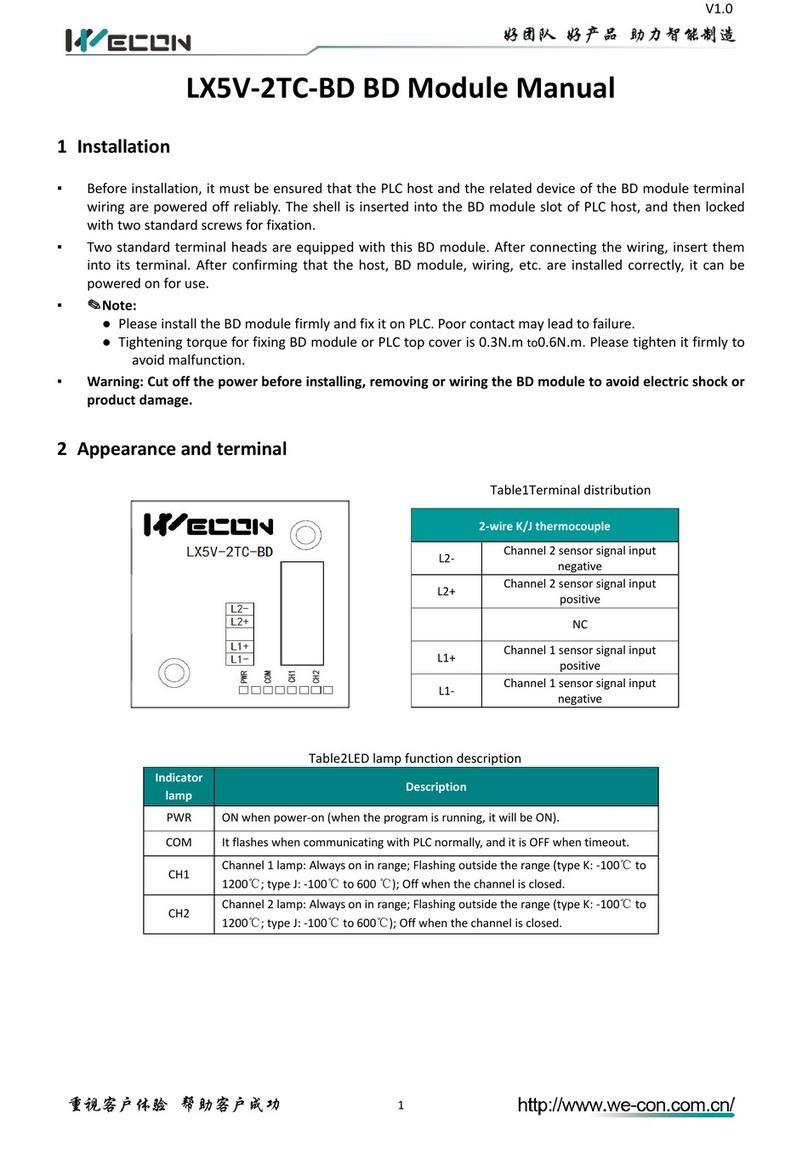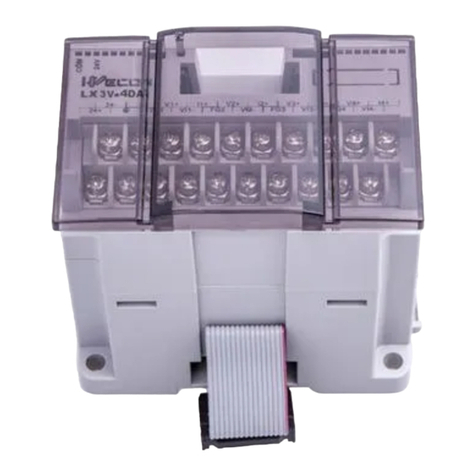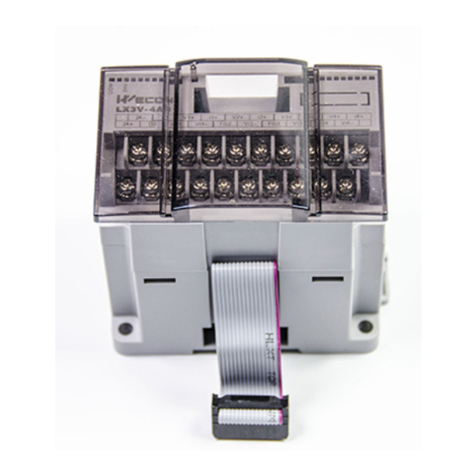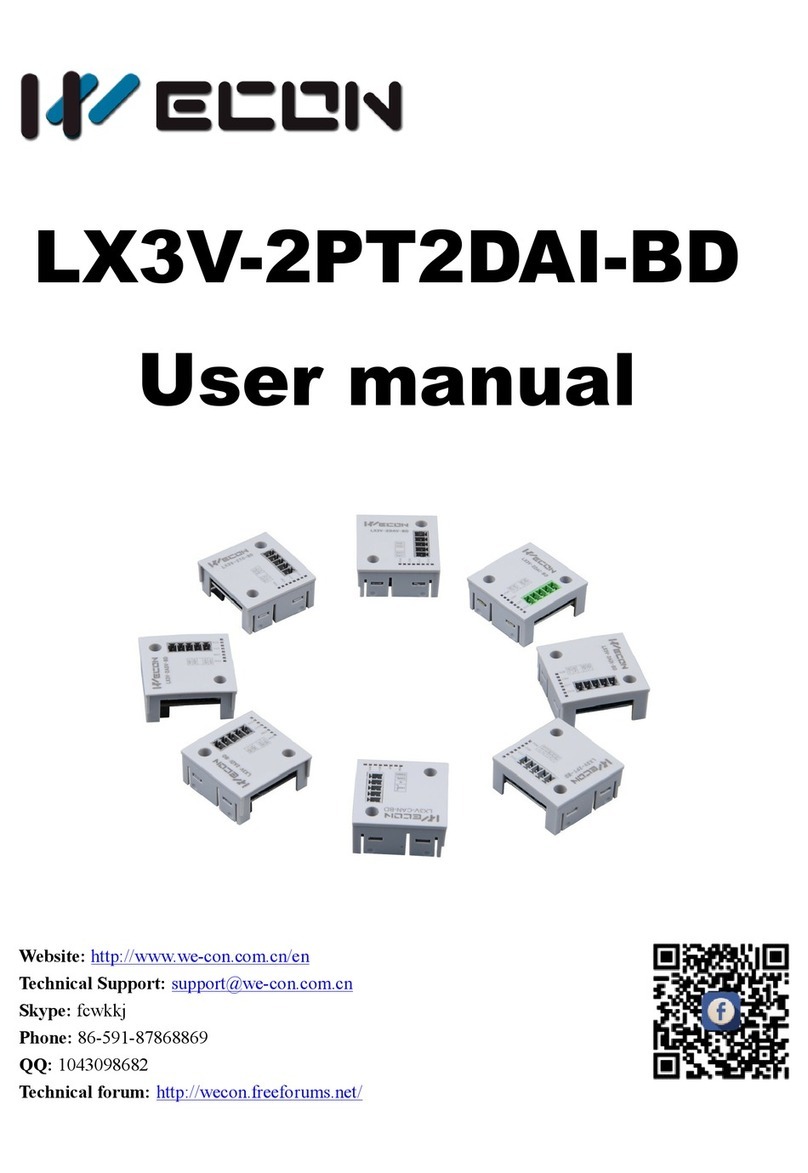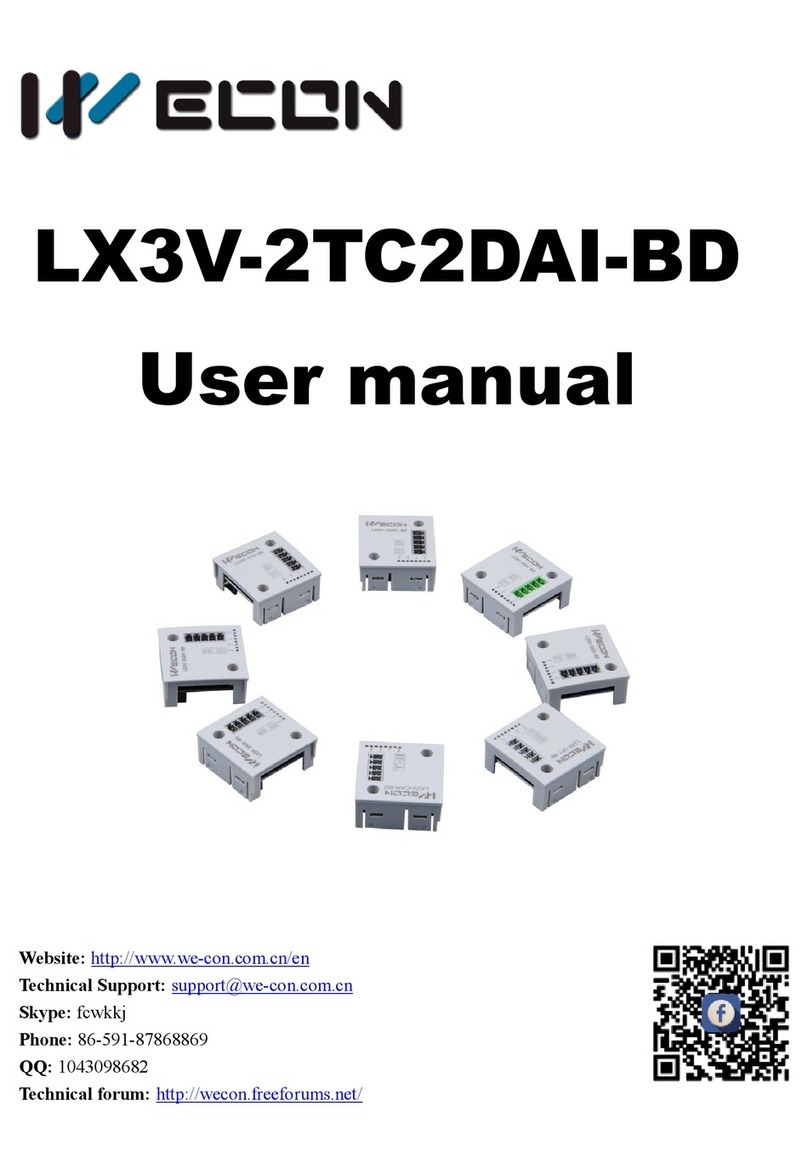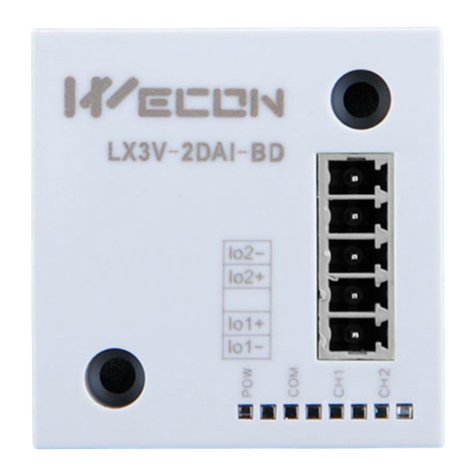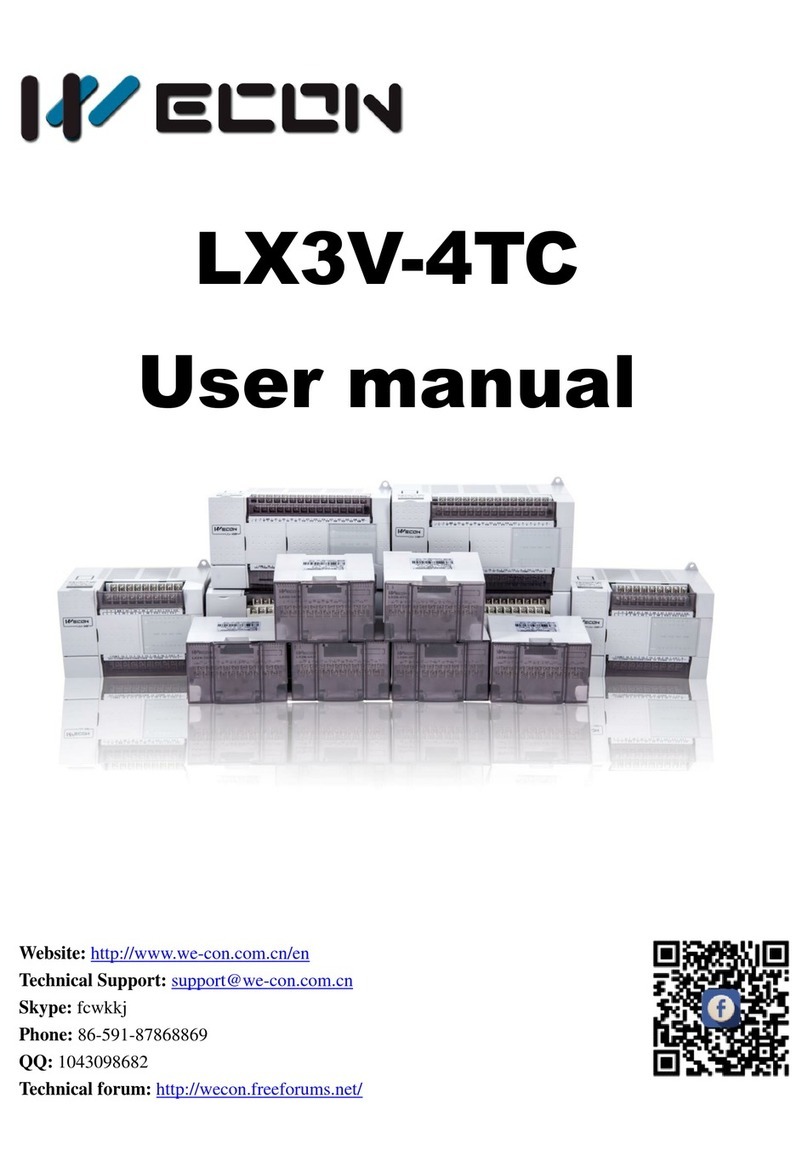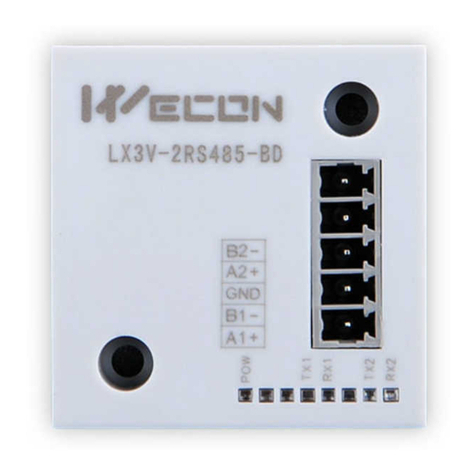
5 Description of PLC device
(1) When connected to LX3 series PLC, please refer to LX3 series BD module manual.
(2) When connected to LX5 series PLC, if the firmware version of PLC is lower than 2.051 (excluding 2.051),
or BD module is not configured by host computer, it can be controlled by the following system devices:
Table3Device allocation
Expansion port 1 description
Expansion port 2 description
CH1 thermal resistance input
channel open flag
OFF: Open
ON: Close
CH1 thermal resistance input channel
open flag
OFF: Open
ON: Close
CH2 thermal resistance input
channel open flag
OFF: Open
ON: Close
CH2 thermal resistance input channel
open flag
OFF: Open
ON: Close
CH1 temperature at 0.1℃unit
(-190℃to 600℃: -1900to6000)
The temperature of CH1 at 0.1°C
(-190℃to 600℃: -1900to6000)
The temperature of CH2 at 0.1°C
(-190℃to 600℃: -1900to6000)
The temperature of CH2 at 0.1°C
(-190℃to 600℃: -1900to6000)
(3) You can select device through I/O mapping to use the configuration function of new BD module. For
details, please refer to "6.1 Parameter configuration".
6 Instructions for use
6.1 Parameter configuration
① Open the host computer software and create a new project, double-click “Project Manager” →
“Extended Function” → "BD Module Configuration" Noteto enter “BD settings” interface;
② Configure the currently connected PLC (take the LX5V-2416 model as an example) and BD module
model on the BD module configuration interface: Select “LX5V-2PTS" in the device bar on the right side
of the BD module configuration interface and double-click to add it to the corresponding slot position of
PLC (slot number 1 or 2, the software will select slot 1 by default, and right-click to move down to slot
2);
③ After adding the BD module to the slot, double-click or right-click to select configuration parameters to
enter LX5V-2PTS-BD configuration parameters interface, as shown in the following figure. Configure
related parameters on this interface.

